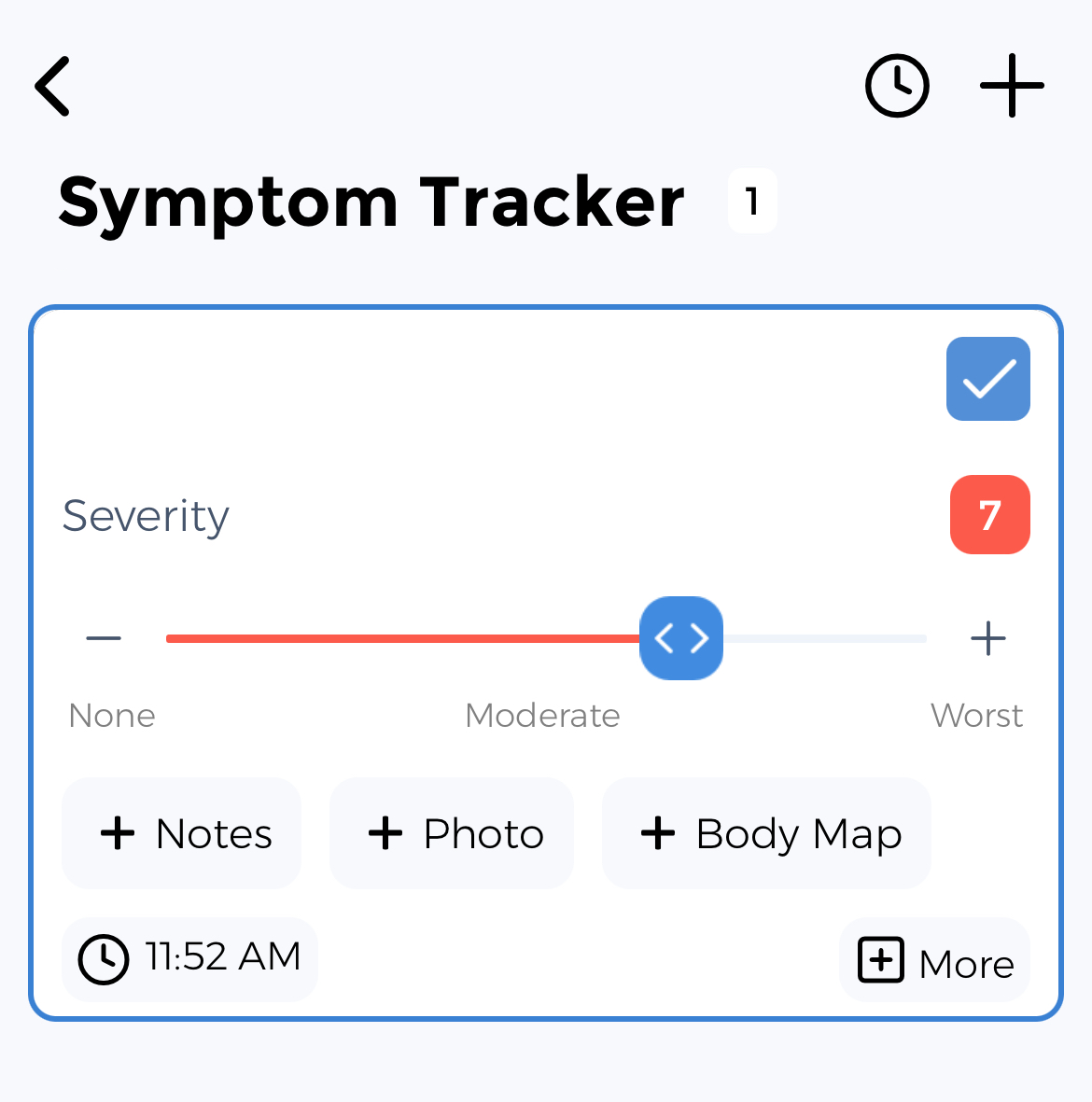Parkinson's Disease Symptom Tracker: Your Health Assistant
Living with Parkinson's Disease means dealing with tremor, slowed movement, rigid muscles, and more. But here's the truth: Data is your most powerful tool. Every logged symptom reveals patterns—so you can take informed action.
Parkinson's disease is a progressive nervous system disorder affecting movement. Tracking symptoms helps monitor disease progression and medication effectiveness.
Key Parkinsons Symptoms You Should Track
Struggling with symptoms like these? Tracking them reveals patterns, triggers, and how they impact your daily life.
Tremor
Slowed movement
Rigid muscles
Impaired posture
Speech changes
Writing changes
Loss of automatic movements
Track Your Parkinson's Disease Treatments
Tracking how these common treatments affect your symptoms can help you and your healthcare provider optimize your care plan:
Our tracker helps you monitor when you take medications and how they affect your symptoms over time.
Standardized Parkinson's Disease Assessments
Complete these evidence-based assessments in the App to measure your severity and monitor your progress:
⚡ Knowledge Is Your Superpower
The difference between feeling overwhelmed by Parkinson's Disease and feeling in control starts with data. When you track your symptoms, you transform uncertainty into clarity. Every data point brings you closer to understanding your unique patterns.
It's free to try for anyone—whether you're managing your own condition, supporting a child, helping an aging parent, or assisting a partner. Our tracker adapts to your specific role in the health journey.
How the CareClinic Parkinsons Symptom Tracker Adapts to Your Needs
Adults
Caregivers
Parents of Children
Young Adults
Your Complete Parkinson's Disease Management Toolkit
Uncover Patterns & Insights
Map your Parkinsons symptoms like a detective solving a case.
Understand Your Medication's Impact
Turn guesswork into strategy. See how treatments affect your well-being with clear health insights.
Objectively Measure Your Progress
Use clinically validated tools to objectively measure your progress.
Other Tools You May Like...
Plus 2 more specialized tracking tools available
Access All Tracking ToolsAlso Supports Other Conditions Like
Success Stories from Our Community
"After being told it was 'all in my head', this tracker finally helped me got my life back. I can now prepare for doctor visits with real data which has changed everything."
"When traditional approaches weren't enough, this tracker finally helped me was able to predict flare-ups. I can now identify my unique triggers which has changed everything."
Take Control of Your Parkinson's Disease Journey
Transform from feeling like a passive patient to becoming an informed self-advocate. Join thousands who've discovered new insights about their condition.
Designed by people who understand the daily challenges of managing chronic conditions, we're here to support you and your ❤️ ones.
Download Your Parkinsons Tracker NowYour Data is Protected
Private & Secure
HIPAA Compliant
GDPR Compliant
Never Sell Data
Your data is yours: You get full control over who can view your information. CareClinic keeps all your data secure and encrypted.

